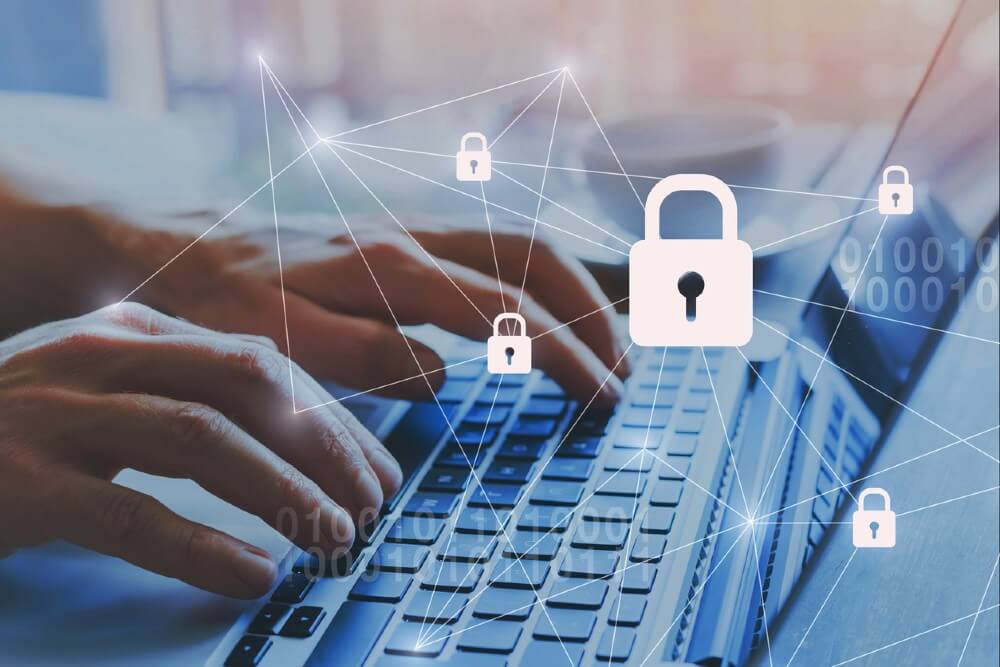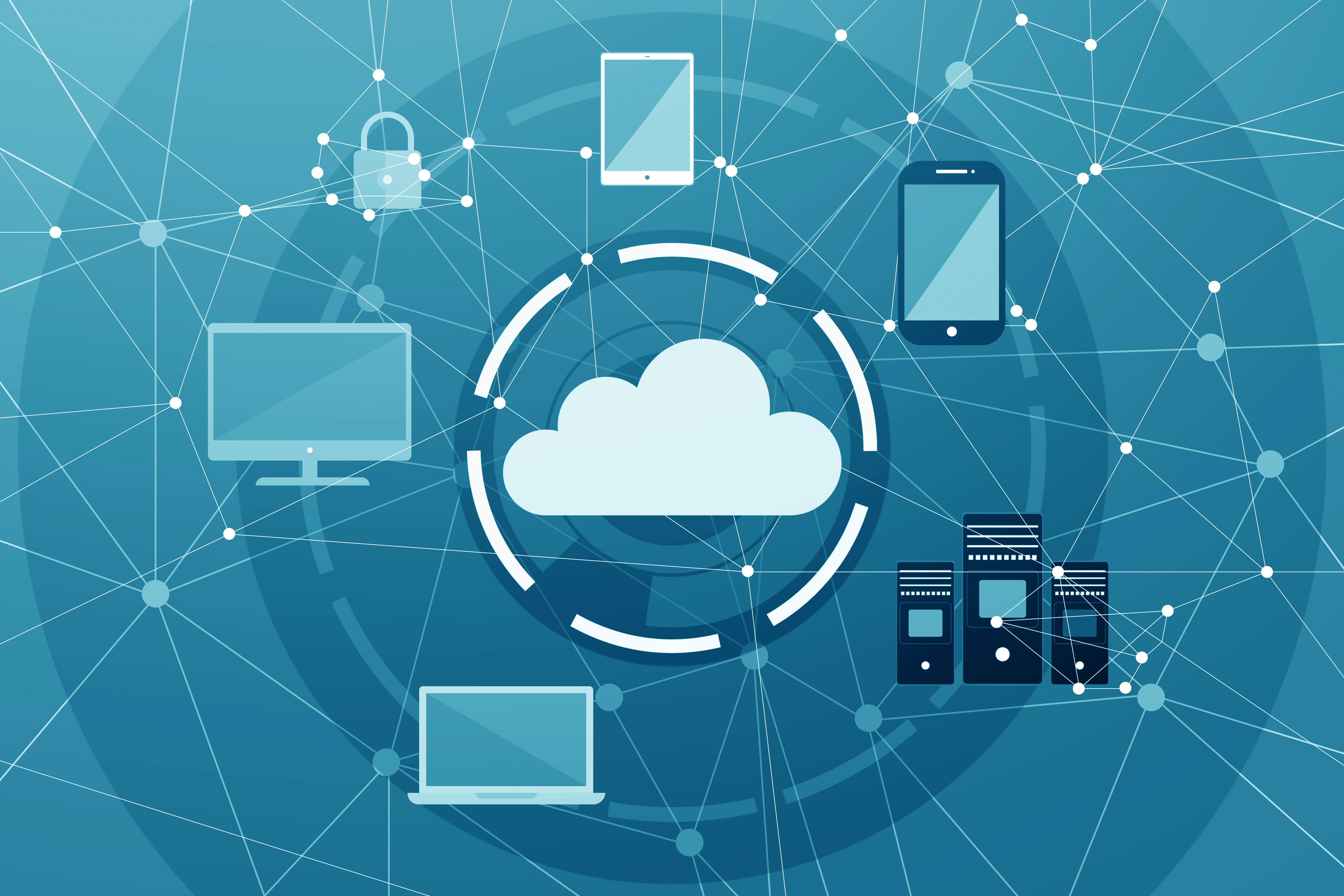What are the 10 Steps to Cyber Security
You may be hearing a lot about cyber security at the moment with the steep rise in cyber crime in recent years. Businesses are looking for the best ways to protect themselves against the ever-increasing threat from hackers as cyber crime methods become more and more sophisticated, in line with rapid advances in technology.
Cyber Security
The statistics are alarming, with the number of UK businesses suffering cyber attacks doubling over the last 5 years according to a cyber security report by internet provider, Beaming. The report found that 1.5 million organisations fell victim to cyber crime in 2019, which is 25% of all UK businesses. Malware and phishing were identified as the most common tools used in these attacks, with malware attacks successful 20% of the time in smaller businesses and 31% of the time in larger businesses and phishing attacks successful 29% of the time in smaller businesses and 38% of the time in larger businesses. Amongst these attacks, the organisations’ employees have been responsible for just over a third of security breaches, be it through malicious intent or neglect.
1. User Education and Awareness
It is important to empower users with the knowledge and skills needed to protect themselves and their organisations. From recognising phishing attempts to practicing good password security and understanding the risks associated with downloading files from untrusted sources, informed users are better equipped to deal with cyberattacks. Having a culture of cybersecurity awareness instils a sense of collective responsibility, where every user ensures a more resilient and secure online environment for everyone around them.
2. Home and Mobile Working
Home and mobile working offers both flexibility and convenience; however, it can also present significant cybersecurity challenges. Employees accessing company networks from personal devices or remote locations can inadvertently expose vulnerabilities. Cybersecurity measures such as strong authentication, encryption, and regular software updates are crucial to safeguarding data. User training and awareness are vital as remote workers need to be vigilant about phishing attempts and other cyber threats. Balancing the benefits of remote work with robust security protocols is the key to ensuring that the home and mobile working environment remains both productive.
3. Secure Configuration
Secure configuration is a fundamental element of cybersecurity, encompassing the process of setting up computer systems and software to minimise vulnerabilities and potential attack surfaces. In this context, it involves configuring devices, applications, and networks in a way that adheres to established security best practices and principles. This entails disabling unnecessary services, removing default accounts and passwords, regularly updating and patching software, and implementing access controls to ensure only authorised users have privileges. Secure configuration not only strengthens an organisations resilience against cyber threats but also streamlines incident response efforts.
4. Removable Media Controls
Removable media controls are essential components of cybersecurity strategies, designed to mitigate the risks associated with external devices like USB drives, external hard disks, and SD cards. From a cybersecurity perspective, effective controls involve regulating and monitoring the use of removable media within an organisation. This includes policies that dictate how and when such devices can be connected to networked computers, mandatory scanning for malware before access is granted, and encryption to protect data in transit. The goal is to prevent the introduction of malicious software or unauthorised data exfiltration through these media, as they can serve as potential entry points for cyberattacks. By implementing robust removable media controls, organisations can strengthen their defences against a common vector for malware infiltration and data breaches, safeguarding sensitive information and network integrity.
5. Managing User Privileges
Managing user privileges is an important aspect of cybersecurity, focused on controlling and restricting user access to computer systems, networks, and data. This involves granting users the minimum level of access necessary to carry out the duties in their role. This approach reduces the attack surface by limiting the potential damage that can be caused by compromised accounts or insider threats. Effective management of user privileges includes regularly reviewing and updating access permissions, implementing strong authentication mechanisms, and monitoring user activities for any suspicious behaviour.
6. Incident Management
Incident management focuses on the processes and procedures that an organisation will use to detect, respond to, and recover from any security incidents. An incident can be anything from a data breach or malware infection to a system compromise or a denial-of-service attack. A well-defined incident management framework includes strategies for identification, containment, eradication, and recovery from incidents. It also involves clear communication channels, documentation, and a post-incident analysis to identify vulnerabilities and improve future responses. An effective incident management plan not only minimises the impact of security breaches but also helps organisations learn from their experiences, strengthening their overall cybersecurity resilience.
7. Monitoring
System monitoring serves as the eyes and ears that surveillance an organisations digital environment. Using real-time observation and analysis of network traffic, system logs, and user activities to detect any unusual or potentially malicious behaviour. Effective system monitoring employs a combination of automated tools and human expertise to identify security incidents promptly, allowing for rapid response and mitigation. This proactive approach helps organisations to detect and address any threats before they can cause significant damage, making it a fundamental aspect of maintaining a robust cybersecurity posture. Ongoing system monitoring provides valuable data for threat intelligence and informs security improvements to strengthen an organisations defence against evolving cyber threats.
8. Malware Protection
Malware protection is a fundamental pillar of cybersecurity, dedicated to safeguarding digital systems and data from malicious software, or malware. From a cybersecurity perspective, this entails a multi-layered approach, combining various security measures such as antivirus software, intrusion detection systems, and user education. These defences work together to prevent, detect, and mitigate malware infections. It is crucial to keep antivirus databases and security software up to date to recognise and block threats effectively. User awareness is also important as individuals need to be cautious about clicking on suspicious links, downloading unknown files, or opening email attachments from untrusted sources.
9. Network Security
Network security incorporates measures and protocols that are put in place to safeguard the integrity, confidentiality, and availability of data as it traverses computer networks. This involves a comprehensive approach that includes firewalls, intrusion detection and prevention systems, encryption, access controls, and regular security audits. The primary goal of network security is to stay protected against a wide range of threats, including cyberattacks, data breaches, and unauthorised access. A robust network security strategy is essential to mitigate risks and ensure the uninterrupted operation of critical systems and services while safeguarding sensitive information from malicious actors.
10. Risk Management
Risk management is a foundational concept in cybersecurity, focusing on identifying, assessing, and mitigating potential threats and vulnerabilities that can compromise an organisations digital assets and operations. From a cybersecurity perspective, it involves a systematic process of understanding the specific risks that an organisation faces, prioritising them based on potential impact and likelihood, and implementing measures to minimise or transfer these risks. Cyber risk management includes strategies such as vulnerability assessments, threat modelling, incident response planning, and the development of robust security policies and controls.
Protect Your Business with EBC Cyber Security Solutions
At EBC Group, we partner with the biggest names in cyber security to supply businesses with the very latest in security solutions to help counter the risk of cyber attack which can be financially and reputationally devastating. Our security solutions add vital layers of protection to businesses’ IT systems without compromising their IT performance. We provide the full range of cyber security services, including real-time intrusion prevention technology, comprehensive testing packages and robust training programmes for your employees, as well as full disaster recovery solutions.
For more information about how we can help you secure your network, contact us, call us on 0121 3680119 or email us at hello@ebcgroup.co.uk.
—-----------------------------------------------------------------------------------------------------------------------
Protect
There are a variety of cyber security solutions available which will increase your organisation’s defences against cyber attacks. This includes protection technology such as firewalls, multi-factor authentication and anti-virus software. Having these layers of protection and monitoring in place alongside premium technology to track and monitor your systems in real-time are essential in helping you and your colleagues mitigate cyber risks.
Firewalls
Hackers have developed ways to get into even the best protected computer security systems. They can enter your network without leaving any signs and can remain there undetected for as long as 18 months which can mean huge financial losses or implications to your business’ reputation.
Firewall hardware or software is a security device that helps protect your network by filtering the traffic that enters it, stopping unauthorised users from accessing the confidential data stored on your computer. It can also stop malicious software from infiltrating your computer.
Different types of firewalls provide different levels of protection so it is worth investing in a good quality product.
Multi-factor authentication
Multi-factor authentication is designed to protect your user accounts from cyber attackers trying to steal credentials or exploit weak credentials.
It is a two (or more) step verification process which requires users to enter a username and password or pin but also to approve authentication requests via an a smartphone app or another device. Some multi-factor authentication processes also involve providing biometric data such a fingerprint.
This acts as protection against phishing, social engineering and password attacks.
Anti-virus
Another key element in keeping your systems safe is anti-virus software. Anti-viruses work by detecting a virus, identifying which type of virus it is then working to remove it from your computer or quarantine it so that it cannot cause any further damage.
Anti-viruses can also act as a preventative measure, performing system scans to monitor your device and system files searching for possible threats and using real-time threat detection to guard your computer system against potential risks as they arise.
This means that they prevent a wide range of problems such as poor computer performance or complete failure, damaged system parts, stolen personal details or the sending of unauthorised messages.
In order to combat highly developed malware viruses, it is important to have the latest in anti-virus protection.
Test
Testing your systems is an excellent way to see if they are currently cyber safe or if you need to put further security measures in place to avoid security risks. Penetration testing involves putting your network through a simulated cyber attack to see how it would hold up in the event of a real attack.
Expert testers will put your IT system to the test, identifying any vulnerabilities and trying to exploit them, as a hacker would do in real life. They will then provide recommendations and guidelines as to how to address these so that your organisation can become more cyber secure.
A technical report will be written, highlighting all of the relevant issues and giving suggestions as to how to counteract the low, medium and high risk vulnerabilities detected that could be targeted by cyber criminals in future and compromise your network. For each issue identified, there will be an overview, an analysis and security recommendations which can be implemented to provide extra security to your systems and applications.
The best way to ensure that your organisation remains secure is to test your networks regularly; you could see it as an auditing process. Specific industry and legal requirements may dictate a certain amount of testing meaning you have to carry out frequent tests and security evaluations.
An advantage of carrying out systematic reviews is that it will reassure your clients, partners and suppliers that they are dealing with a business which takes cyber security seriously and that their data is in safe hands.
Disaster Recovery
Even with the best cyber security measures in place, it is still possible that hackers will be able to infiltrate your network and gain access to your vital data or cause damage to your systems. Therefore, it is important to have a good backup and disaster recovery strategy to ensure that you are covered if the worst case scenario occurs.
Cloud Recovery solutions ensure your data is recoverable within minutes, hours or days. With Backup as a Service (BaaS), your off-site data backups are always secure meaning that you won’t lose any of your important data. With Disaster Recovery as a Service (DRaaS), you have extra reassurance that copies of your production servers are in a ready-to-go state so you can get back up and running in no time.
Cyber Essentials
Gaining a cyber security accreditation such as Cyber Essentials shows your clients and suppliers that your organisation is cyber safe and that you take your responsibilities of protecting their data seriously.
The Cyber Essentials certification is backed by the government and ensures that your business has a good base level of cyber security, protecting you against 80% of cyber attacks and data theft. To get accredited, your business must complete an online questionnaire outlining various aspects of your cyber safety measures and backing this up with supporting documents. You may benefit from some assistance with this from an cyber security IT specialist.
Having the certification means that you can work on government contracts and with organisations who only deal with Cyber Essentials accredited businesses.
Mitigate 365
More and more businesses are transitioning over to the Cloud and with this has come an increase in security incidents involving cloud platforms and services. Microsoft 365 is one of the most popular cloud platforms and hence frequently targeted by hackers due to the amount of valuable data it holds. Reviewing your system for any misconfigurations and process weaknesses and checking user settings is crucial in terms of protecting your network and ensuring you are not leaving yourselves exposed to cyber crime.
Mitigate 365 testing packages provide a hassle-free way of making sure that your new systems are set up correctly or that current ones are thoroughly reviewed and secured. Cyber security experts will check all of your security settings to make sure that they are correct and fully optimised so that you are protected against phishing, malware and cyber attacks.


